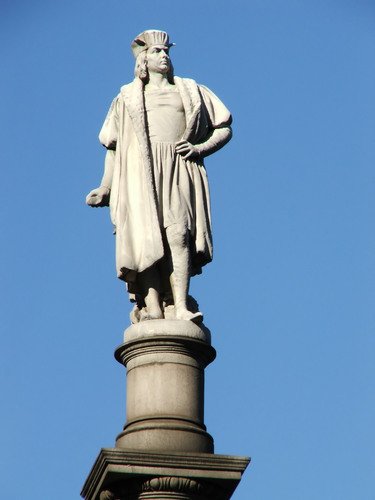 Several months ago, we added a page to the main PAL website entitled "Argentine Project." This was due to what we perceive as the need to connect with our kindred in the "cone of South America." We certainly have not changed our mind about that goal. We just want to move this here to the blog.
Several months ago, we added a page to the main PAL website entitled "Argentine Project." This was due to what we perceive as the need to connect with our kindred in the "cone of South America." We certainly have not changed our mind about that goal. We just want to move this here to the blog.
***************************************************************************
Buenos Aries, Argentina
***************************************************************************
Argentine ConnectionsThe vast majority of Argentinians are of European descent, primarily Spaniards, Italians (overwhelmingly Northern Italians, especially Lombardians), Germans (Germans, Swiss, Austrians), British Isles-descendants (English, Scottish, Irish), and other Europeans. It is the home of the largest colony of Northern Italians in the world, by far. Lega Nord has an office in Buenos Aires. We too would like to establish a line of communication between the San Francisco Metro and Buenos Aires and Sao Paulo. As immigration to Northern California was starting to fizzle out, immigration to these areas was just beginning. For a time our ancestors, and theirs, shared the same ships across the Atlantic ocean.
They often came from the same regions and provinces. Up through the 1880s, northwest Italy (mainly Liguria) was the only part of the Italian peninsula which was open for emigration, which was reflected in the makeup of Northern California. This is also why those who migrated to "the Cone" were primarily from the northeast corner of Italy.
Also, as small numbers of Padanian-descendants from the southern "Cone of South America" (Argentina, Chile, Uruguay, Sao Paulo province of Brazil) find their way to California and other states, we want to reach out to them.
We're just using the name "Argentina" as a catch-all term for the entire "Greater Argentina" region. Sao Paulo province has the largest concentration of Italians outside of Italy: Six million people! The city and metro of Sao Paulo has more Italians than any city in the world (yes, more than Rome and Milano!). The population of Sao Paulo Metro is almost 20 million people. The population of the Buenos Aries Metro is over 12 million people. Did you know that Italians MADE Sao Paulo into one of the greatest cities in the world out of absolute abject poverty (before they arrived)?
Also noteworthy is the fact that the climate in this "cone" is not tropical, but very much like the USA or Europe.
***************************************************************************
Oktoberfest 2005 - Cordoba, Argentina
Oktoberfest 2005 from Cordoba, Argentina (image gallery)
***************************************************************************
Northern League office in Argentina (Lega Nord)
Associazione Federale Padani in Europa e nel Mondo
Indirizzo Avenida Centenario 1891 - C,p. B1643CGF
Beccar, Provincia di Buenos Aires, Argentina

***************************************************************************
Sao Paulo, Southern Brazil

















